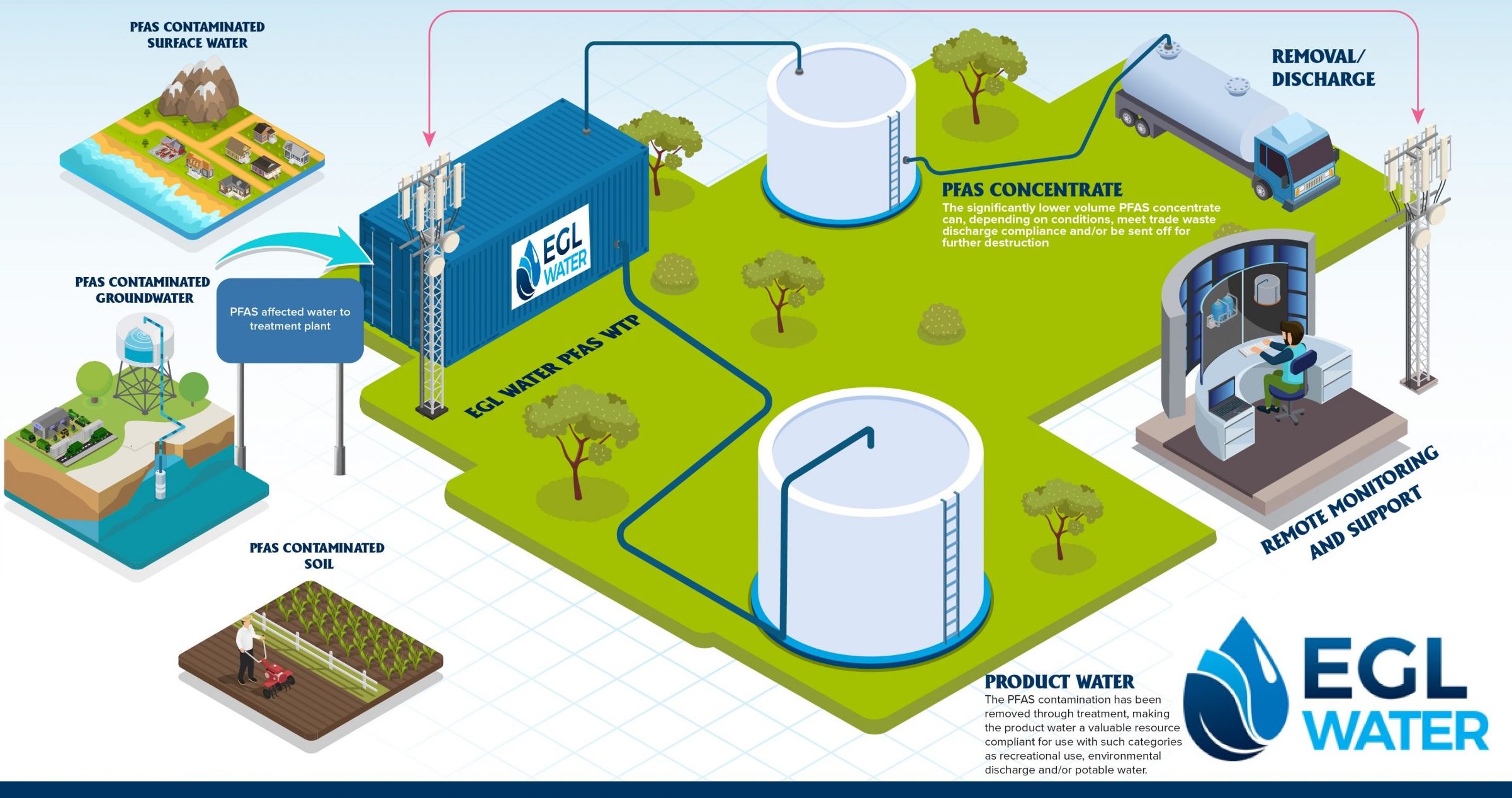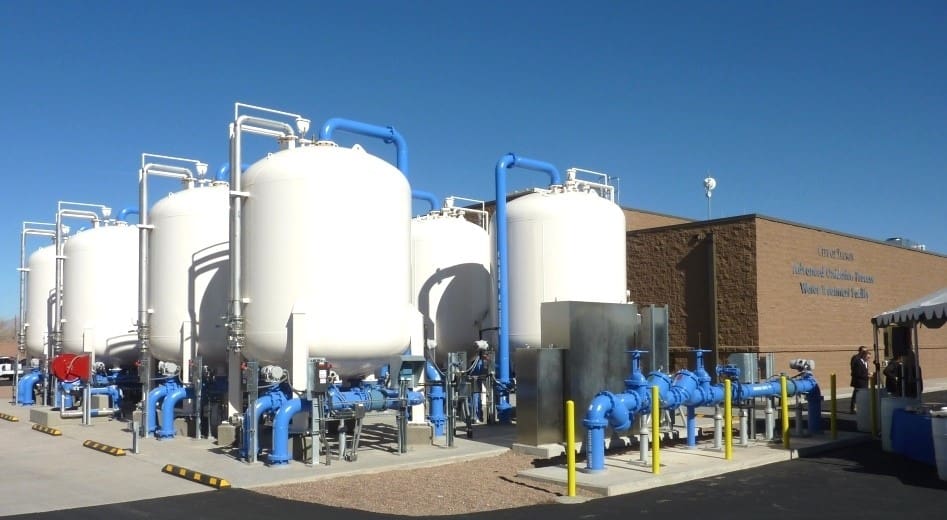M270 PFAS Treatment for Industrial Water Systems
M270 PFAS Treatment for Industrial Water Systems
Blog Article
Ingenious PFAS Therapy Solutions for Safer Water
The increasing occurrence of PFAS contamination in water supplies demands an important assessment of cutting-edge treatment options. Additionally, arising bioremediation strategies use a more sustainable method to tackling PFAS obstacles. pfas management.
Overview of PFAS Contamination
PFAS contamination has emerged as a substantial environmental and public wellness problem. Per- and polyfluoroalkyl substances (PFAS) are a group of synthetic chemicals known for their determination in the atmosphere and body, leading them to be generally described as "for life chemicals." These substances have actually been commonly utilized in different industries, including firefighting foams, water-repellent fabrics, and food packaging, primarily as a result of their water- and grease-resistant properties.
The widespread use PFAS has actually led to their detection in soil, water materials, and even in the blood of human beings and pets. Research studies have linked PFAS direct exposure to countless wellness concerns, consisting of developing impacts in babies, immune system dysfunction, and numerous types of cancer. Additionally, the ecological persistence of these substances complicates their degradation and elimination, increasing issues about lasting environmental impacts.
Regulatory bodies are significantly applying rigid guidelines to monitor and reduce PFAS degrees in drinking water and various other ecological mediums. As understanding of PFAS contamination grows, it has actually become necessary for neighborhoods and sectors to seek effective therapy services to minimize exposure and safeguard public health and wellness.
Advanced Filtration Technologies
As the seriousness to address PFAS contamination intensifies, advanced purification innovations have emerged as a crucial part in the removal efforts focused on removing these persistent chemicals from water resources. These innovations take advantage of advanced systems to properly target and capture PFAS substances, which are infamously resistant to traditional therapy methods.
One of one of the most encouraging strategies is using granular turned on carbon (GAC), which adsorbs PFAS particles due to its high surface and porous framework. This approach has been commonly applied in both municipal and industrial setups, showing significant decreases in PFAS concentrations. Furthermore, ion exchange materials have gained traction, specifically made to uniquely bind PFAS ions from water, thus facilitating their elimination.
Membrane filtration modern technologies, such as reverse osmosis and nanofiltration, also show effectiveness in PFAS removal by physically separating pollutants from water - pfas management. These systems can accomplish high levels of pureness, making them suitable for drinking water applications
Chemical Treatment Developments
Numerous chemical therapy advancements are being explored to properly resolve PFAS contamination in water products. One appealing strategy entails the use of advanced oxidation processes (AOPs), which utilize powerful oxidants such as ozone, hydrogen peroxide, or chlorine dioxide integrated with UV light to break down PFAS compounds right into less damaging substances. This technique has shown effectiveness in lab setups, revealing possible for scalability in real-world applications.
One more ingenious method is the advancement of ion-exchange resins particularly created next page to target PFAS. These materials can uniquely adsorb PFAS compounds from water, permitting their elimination during treatment procedures. Current advancements have enhanced the performance and capacity of these resins, making them a beneficial choice for water therapy facilities.
In addition, researchers are exploring the use of chemical agents like persulfate and ferrous ions to improve the degradation of PFAS in infected water. These agents can generate chemical reactions that help with the breakdown of relentless PFAS compounds.
Arising Bioremediation Methods
Recent innovations in chemical therapy advancements have led the way for discovering bioremediation methods as a feasible alternative for addressing PFAS contamination. Bioremediation uses the all-natural metabolic procedures of microbes to weaken or transform pollutants, making it an attractive method for dealing with consistent impurities like PFAS.
Arising strategies in bioremediation consist of making use of genetically engineered microorganisms that can particularly target and break down PFAS compounds. These microbial pressures are being established for their improved destruction abilities, raising the efficiency of the remediation process. In addition, scientists are investigating the capacity of plant-assisted bioremediation, where specific plant varieties might uptake and sequester PFAS from contaminated soil and water.
One more appealing strategy is the application of bioaugmentation, which involves introducing advantageous bacteria right into infected atmospheres to improve the destruction site here of PFAS. This technique can promote faster remediation timelines and enhance general performance.

Regulative Frameworks and Criteria
A thorough regulative structure is vital for effectively managing PFAS contamination and making sure public wellness defense. The raising acknowledgment of per- and polyfluoroalkyl compounds (PFAS) as toxic wastes has prompted numerous government and state companies to establish requirements that regulate their presence in water supplies. The United State Epa (EPA) has actually developed health and wellness advisories and is pursuing setting enforceable restrictions for PFAS in alcohol consumption water.
State-level guidelines differ dramatically, with some states embracing stricter guidelines than those recommended by the EPA. These guidelines usually consist of maximum contaminant degrees (MCLs) for details PFAS compounds, monitoring requirements, and reporting obligations for water energies. Furthermore, emerging structures concentrate on the remediation of infected sites, emphasizing the demand for efficient treatment modern technologies.

Verdict
In final thought, the advancement and implementation of innovative PFAS treatment services are crucial for addressing the pervasive problem of water contamination. Advanced purification modern technologies, chemical therapies, and arising bioremediation techniques jointly offer a multifaceted approach to effectively lower and weaken PFAS degrees. As governing frameworks proceed to progress, integrating these innovations will certainly be necessary to secure public health and wellness and restore the stability of polluted water resources, inevitably adding to a cleaner and much safer atmosphere.
Report this page